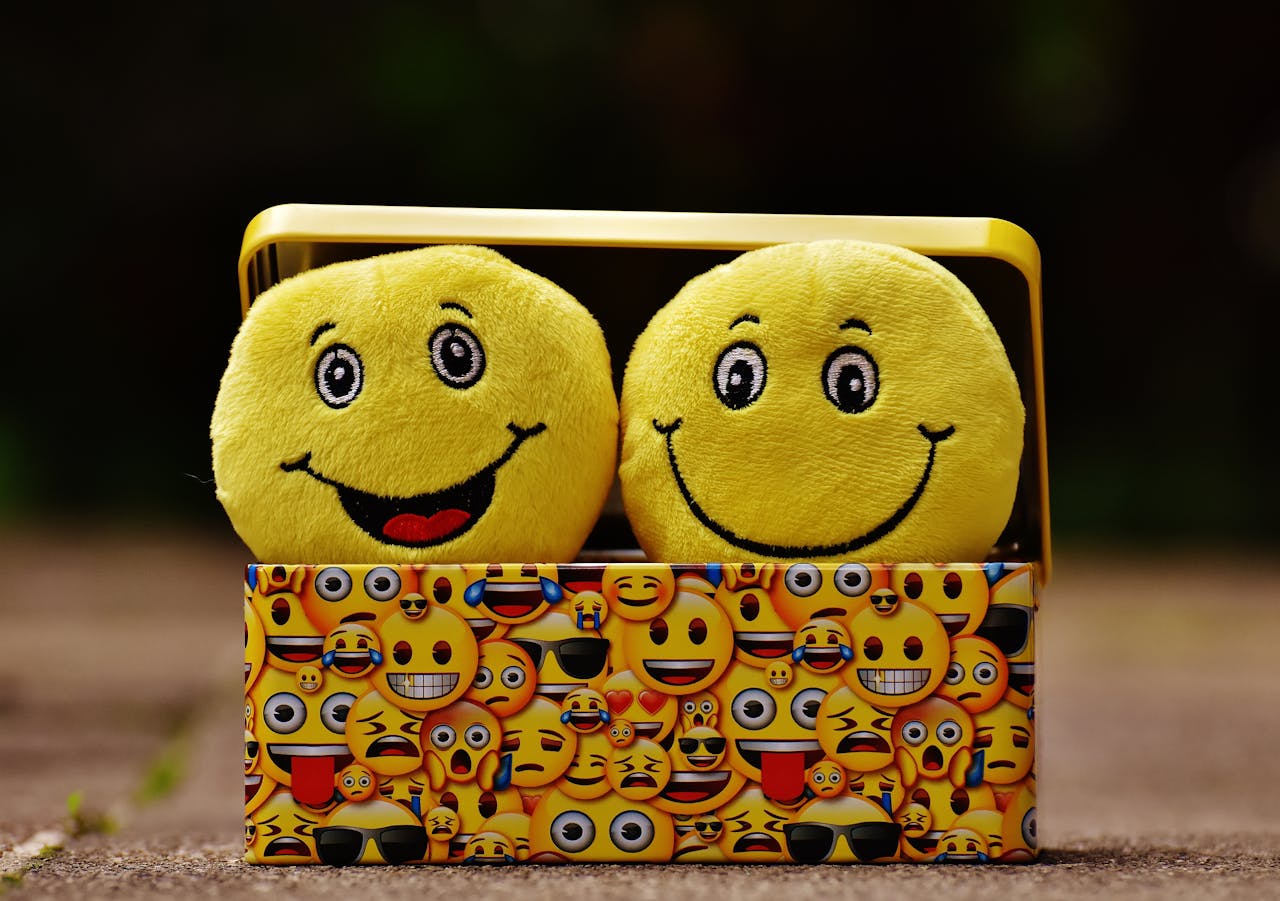remember when email was, like, super formal? All “Dear Sir/Madam” and “Sincerely,” and just text, text, text. It felt a bit… stiff, didn’t it? Especially now, as we’re cruising into 2025, where pretty much everyone communicates with a mix of words and little pictures. From our phones to instant messages, emojis are just… there. They add so much flavor, you know?
A quick 👍 or a 😂 can change the whole vibe of a message. But for some reason, Outlook, that workhorse of email programs, always felt a step behind on the emoji front. Or maybe, people just didn’t realize how easy it could be to pop those little expressive faces into their professional (or even casual) emails.
Honestly, it’s not just about making things look cute. Emojis, when used right, can actually make your messages clearer. Think about it: a simple text message saying “Okay” can sound a bit cold, right? But “Okay 👍” feels totally different. It’s like adding a little nod or a friendly pat on the back without actually having to type out a whole sentence describing your emotion.
And in an office setting, where misunderstandings can happen way too easily, those tiny icons are surprisingly helpful. What’s interesting is how many folks still click through menus or copy-paste emojis from other places, totally missing out on the quick ways Outlook actually lets you throw them into your messages. It’s a bit of a secret, I guess, or maybe just something people haven’t really paid attention to.
Why Even Bother with Emoji Shortcuts? My Two Cents
So, why bother with shortcuts? Well, for starters, it’s about speed. And less clicking. Anyone who spends half their day typing emails knows that every little bit of time saved adds up. Imagine you’re trying to quickly confirm something with a colleague. Instead of typing “Yes, that sounds good, thank you!” you could just pop in a “Got it, thanks! 👌”. See? Quicker, and it still gets the point across.
Plus, it makes your emails feel a bit more human, less like a robot typed them out. We spend so much time behind screens, it’s easy for communication to feel sterile. Emojis break through that a little.
I mean, I’ve seen people use them in all sorts of ways. Project managers using green checkmarks ✅ to signify completion in a status update. HR folks sending out little celebratory 🎉 icons for work anniversaries. Even my boss, who’s usually pretty straight-laced, dropped a few smiley faces 😊 in an email about a team lunch. It just lightens the mood, makes emails less of a chore to read. It’s not about turning every email into a text message full of crazy emojis, obviously.
There’s a time and a place. But for quick reactions, showing a bit of personality, or just cutting down on word count, they’re pretty neat. And, believe it or not, knowing the shortcuts makes you look a bit tech-savvy too. It’s like a tiny magic trick you can pull off in front of someone who’s still hunting through menus for that perfect thumbs-up.
The Lowdown on Getting Those Emojis in There Fast
Alright, so how do you actually do this without losing your mind? The cool thing about Outlook is it’s gotten a lot better with emoji stuff over the years. It’s not just for chat apps anymore. The main trick, and the one that probably everyone should know, is pretty much standard across Windows, actually.
You’re typing away, right? And you want to add a smiley face. Instead of going up to “Insert” and then “Symbol” and then “More Symbols” and then trying to find the emoji tab (which, let’s be real, is a nightmare), you just hit a couple of keys. For most Windows users, it’s the Windows key + period (.) or Windows key + semicolon (;). Boom! A little emoji panel pops up. From there, you can browse through all sorts of emojis – faces, animals, food, flags, symbols, the works. You just click the one you want, and it drops right into your email. Easy peasy.
Now, if you’re on a Mac, it’s a different combo, but just as simple. You hit Control + Command + Spacebar. Same deal, a little emoji character viewer shows up, and you pick your poison. It works in pretty much any application, including Outlook. So once you learn it for Outlook, you’ve pretty much learned it for everything else you type on your computer. It’s kinda genius, if you ask me, that they made it so universal.
There are some other sneaky ways too, depending on how you like to work. Sometimes, if you type common emoticons, Outlook will actually convert them for you. Like, type `:)` and it might just turn into a 😊. Or `:(` becomes 😞. It’s not a huge list of conversions, but for the super basic stuff, it’s a neat little time-saver. You gotta have that setting turned on though, where Outlook auto-corrects things. If you’ve ever typed a number and had it turn into a fraction, you know what I’m talking about.
And for those really specific ones, like the shrugging shrug guy 🤷♂️, sometimes you can just type the name right into the emoji picker that pops up with Windows key + period. So if you know you want a “shrug” emoji, start typing “shrug” in the search bar within that pop-up, and it’ll usually show up. It’s kinda like searching for a GIF, but for emojis.
Thinking About Context and Etiquette (Yep, Even for Emojis)
Okay, so just because you can use emojis, doesn’t mean you should throw them into every single email. There’s a time and a place, right? Sending a detailed report to your company’s CEO probably isn’t the moment for a string of party poppers and dancing ladies. But an email to a team member saying “Hey, got your request, I’m on it! 👍” is totally fine and even helpful. It adds a touch of warmth.
The culture of your workplace plays a huge part too. Some offices are super chill and everyone uses emojis, even with clients. Others are a bit more traditional, and a simple smiley might be as far as you go. It’s like picking your words; you wouldn’t use slang in a formal presentation, and the same goes for emojis. My rule of thumb?
If you’re not sure, start small. A single, universally understood emoji like a thumbs-up or a simple smiley is usually a safe bet. Over time, you’ll get a feel for what’s appropriate. It’s about being understood and not making your message look unprofessional, which I think is pretty important when you’re emailing for work.
I think a lot of people worry about looking unprofessional. But in 2025, with so much communication being digital, professionalism is changing. It’s less about being overly stiff and more about being clear, respectful, and efficient. Emojis, believe it or not, can fit into that.
They can help convey tone in a way that plain text just can’t, sometimes. I mean, think about how often you misread an email because you couldn’t tell if the person was being sarcastic or serious. A well-placed emoji can clear that right up. For instance, “Thanks for nothing” with a sarcastic wink 😉 versus a plain “Thanks for nothing.” Huge difference!
So, What’s the Big Deal? It’s Just Emojis.
You might be thinking, “This is a lot of talk about little pictures.” And yeah, maybe it is. But honestly, it’s about making our daily digital lives a tiny bit better, a tiny bit easier, and a tiny bit more… human. We spend so much of our time in Outlook, sending and receiving messages. Why not make that experience a little less monotonous?
Knowing these shortcuts isn’t just a party trick; it’s a practical skill for anyone navigating the digital communication world today. It shows you’re comfortable with your tools, and it lets you express yourself a bit more completely, even when you’re just typing out a quick reply. And for people who are maybe a little overwhelmed by all the features in Outlook, this is one that actually makes things simpler, not more complicated.
So, give it a shot. Next time you’re drafting an email, try hitting that Windows key and the period. You might just find yourself wondering how you ever managed without it. I know I do sometimes. And it’s not like it takes a Ph.D. to figure out, right? It’s just a simple shortcut, and those are always nice to have.
Frequently Asked Questions About Outlook Emoji Shortcuts
Alright, since we’ve chatted a bunch about this, here are some common questions folks usually have about sticking emojis into their Outlook emails, especially for those wanting to pick up the pace.
1. What’s the fastest way to get an emoji into my Outlook email?
The absolute quickest way, in my experience, depends on your computer’s operating system. If you’re on a Windows PC, just hit `Windows key + . (period)` or `Windows key + ; (semicolon)`. A small panel pops up, and you can just click on the emoji you want. Mac users can do `Control + Command + Spacebar` to bring up their character viewer. It’s way faster than digging through menus.
2. Will the emojis I send from Outlook look the same for everyone else?
Mostly, yeah. Emojis are pretty standardized now, so generally, what you see is what they’ll see. But every now and then, if someone is on a really old operating system or a super specific email client, the emoji might look a little different, maybe a slightly varied style or color. It won’t usually break the message, though. It’s just like how some fonts look a bit different depending on where you view them.
3. Can I use these shortcuts in other parts of Outlook, like calendar invites or tasks?
Yep, for sure! These keyboard shortcuts (`Windows key + .` or `Control + Command + Spacebar`) aren’t just for email messages. They pretty much work anywhere you can type text on your computer, including Outlook calendar event descriptions, task notes, or even your contact names. So if you want to add a little 🎉 to your team meeting invite, go for it!
4. Are there any “text” shortcuts for emojis that Outlook automatically converts?
Yeah, a few of the really common ones sometimes auto-convert, but it depends on your Outlook settings. If you type `:)`, it often turns into a 😊. Same with `:( ` becoming 😞, and `:P` for 😛. It’s mostly for those super basic emoticons. If you want more options, or if these don’t convert for you, definitely use the main keyboard shortcut instead. You need to make sure your auto-correct options are set up to do that in Outlook, though.
5. Is it ever inappropriate to use emojis in professional Outlook emails?
Definitely. While emojis can add warmth and clarity, there are situations where they might not be suitable. For instance, in very formal communications, like a job application cover letter, a serious complaint, or an official legal notice, it’s generally best to stick to plain text.
The context of your email, who you’re sending it to, and your workplace culture should always guide your decision. When in doubt, lean on the side of formality, or use a very neutral, universally accepted emoji like a simple thumbs-up if you feel it adds value without distracting. Better safe than sorry, I suppose.












